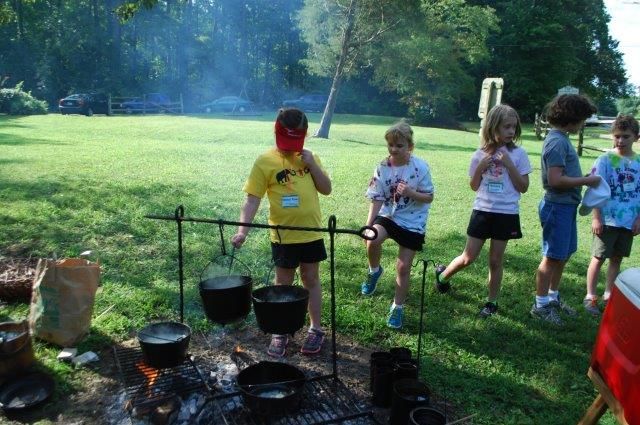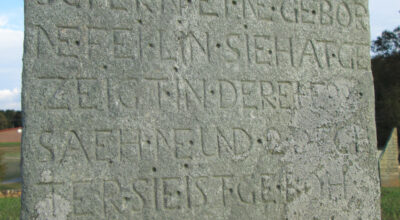History camp a best-kept secret
Published 12:00 am Saturday, September 6, 2014
Carla Shaver, a volunteer for history camp at the Rowan Museum this summer, said history camp is one of the best-kept secrets in Salisbury. After discovering all the fun activities offered, I believe she’s right.
Each summer, four weeks of camp are scheduled, with two for elementary and two for middle school students. Education Coordinator Tricia Creel is the perfect person to lead and direct the camps, having found a love for history when a student at Catawba College. Giving credit to her professors for bringing history to life, she eventually graduated with a history degree. To fulfill part of the requirements for graduation, she became an intern at the museum her senior year, loving it so much she never left.
Kaye Browan Hirst, executive director of the Rowan Museum, is the perfect person to assist Tricia with the camps. Not only a direct descendant of Michael Braun, the builder of the Old Stone House in Granite Quarry, but also a lover of history, Kaye enjoys sharing that love with others and especially children.
In addition to planning ahead, the camps take teamwork, incorporating volunteers as part of that team. Visiting one of the camps this summer, I had the opportunity to talk not only with students, but also with volunteers. Most are high school or college students, but Carla, a stay-at-home mom for now and also a teacher, was happy she could volunteer and get renewal credit.
Wanting everyone to know what a wonderful treasure history camp is, Carla said, “Not only do children learn about history, but they have fun in the process. Tricia and Kaye work so hard to prepare, providing lots of hands-on activities such as soap making, weaving and tin punch. They spend lots of time and effort getting materials together for a successful experience.”
The day I stopped by the Rowan Museum, students were learning about life in colonial days. After stepping off the elevator onto the second floor, I immediately turned to my left, walking into a large open area with approximately 30 boys and girls sitting at tables weaving on individual looms. Walking around observing for a while, I finally sat down beside a student from Hurley Elementary School, Emma Shue. Amazed at the process, I asked if I could try.
More than happy to let me have a turn, she was patient, sometimes guiding the direction of my thread as I weaved. Emma said when she had enough squares, if she wanted to, she could tie them together to make a rug. It was easy to imagine how beautiful her finished product might be since her choice of thread was multi-colored. One lesson I learned from weaving was it didn’t pay to be in a hurry because taking shortcuts only produces mistakes. I suppose that was an important overall lesson to learn about life in the 1700s. People moved at a slower pace than today.
By mid-morning, groups of children were on the floor and at tables playing games such as pick-up sticks, dominoes and marbles. Not having played pick-up sticks in a while, I forgot just how much fun it could be. It’s amazing how a few sticks thrown on a table can provide fun even in this day of technology and electronics such as video games, cell phones and computers.
After about a half-hour of games, Tricia said it was time for crafts. Some of those crafts were making bricks, homemade paper, a necklace and soap. I couldn’t pick a favorite because I liked them all. Enjoying the experience of making something useful from scratch, I felt deep down in my DNA there must be a pioneer spirit, and yet comfortable with modern appliances and gizmos, it would be hard for me to “rough it.”
Interacting with the children at the different groups, I asked why they signed up for camp and was pleasantly surprised at the diversity of answers. Deven Rhoades matter of factly said, “My mom signed me up,” but then quickly added, “it’s been a lot of fun.” Ethan Ott said with school starting, he figured it wouldn’t hurt to learn a little more about history for third grade. Both Deven and Ethan attend Salisbury Academy. When asking what the favorite activity was so far, I wasn’t surprised to hear Emma say, “Weaving was my favorite part. I got to make some really cool things.”
While moving to each station, I took the opportunity to talk to the volunteers. In addition to Carla, two other volunteers I talked with were Harley Hirst and Andrew Goodman. Harley is Kaye’s grandson and a sophomore at Salisbury High while Andrew is a student at Western Carolina. Harley said he first began coming to history camp as a child with his mother Debbie Hirst, who sometimes volunteered. Having participated in camp for years as a student, Harley said when he became old enough, volunteering seemed a natural progression. He then explained, “Being a volunteer for history camp provides a rich environment for leadership skills. I eventually want to be a photographer, and even that relates because you are preserving the present for the future.”
Andrew shared he began volunteering as a freshman in Honors English class at Carson High School. His service project that year was archeology. Advised to talk to Kaye at the museum, after making a connection, he began digging artifacts at the Old Stone House. The next summer, he volunteered to help with history camp and has been volunteering off and on ever since. Although he’s been interested in archeology for a long time, now he’s interested in culture and wants to teach in Japan. He says history camp even has helped with that. Andrew explained, “Volunteering at history camp has been a tremendous asset for teaching because it has helped me learn how to relate to children.”
Talking with Carla at the end of camp, I learned about other activities they enjoyed during the week such as going to the Old Stone House. Her son, Riley said, “I especially liked cooking potato soup, johnny cakes and cinnamon apples with an open pot. It was also fun making birdhouses out of gourds.” Carla, laughing said, “Every bird house looked different, but that was part of the fun. The children will always remember those kinds of hands-on experiences.”
After learning about the Old Stone House and other activities at this year’s camp such as gardening, making marble paper with a painting technique, tombstone rubbings in the Old English Cemetery and a tour of the Utzman Chambers House, next year I hope to attend more days. If you’re an elementary or middle school student, mark history camp on your calendar for next summer. Oh, and teachers, don’t forget you can get renewal credit.
Hope to see you there!



